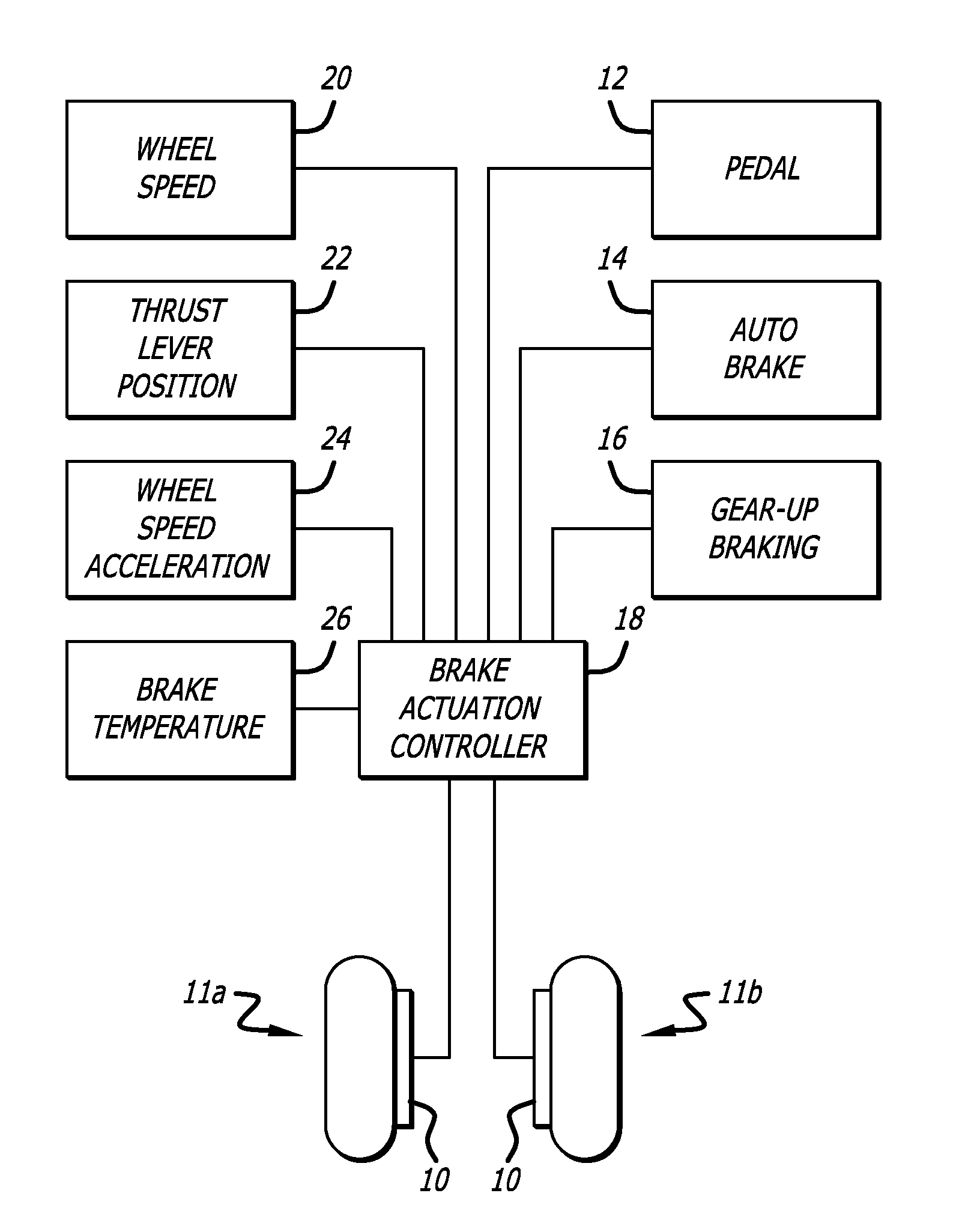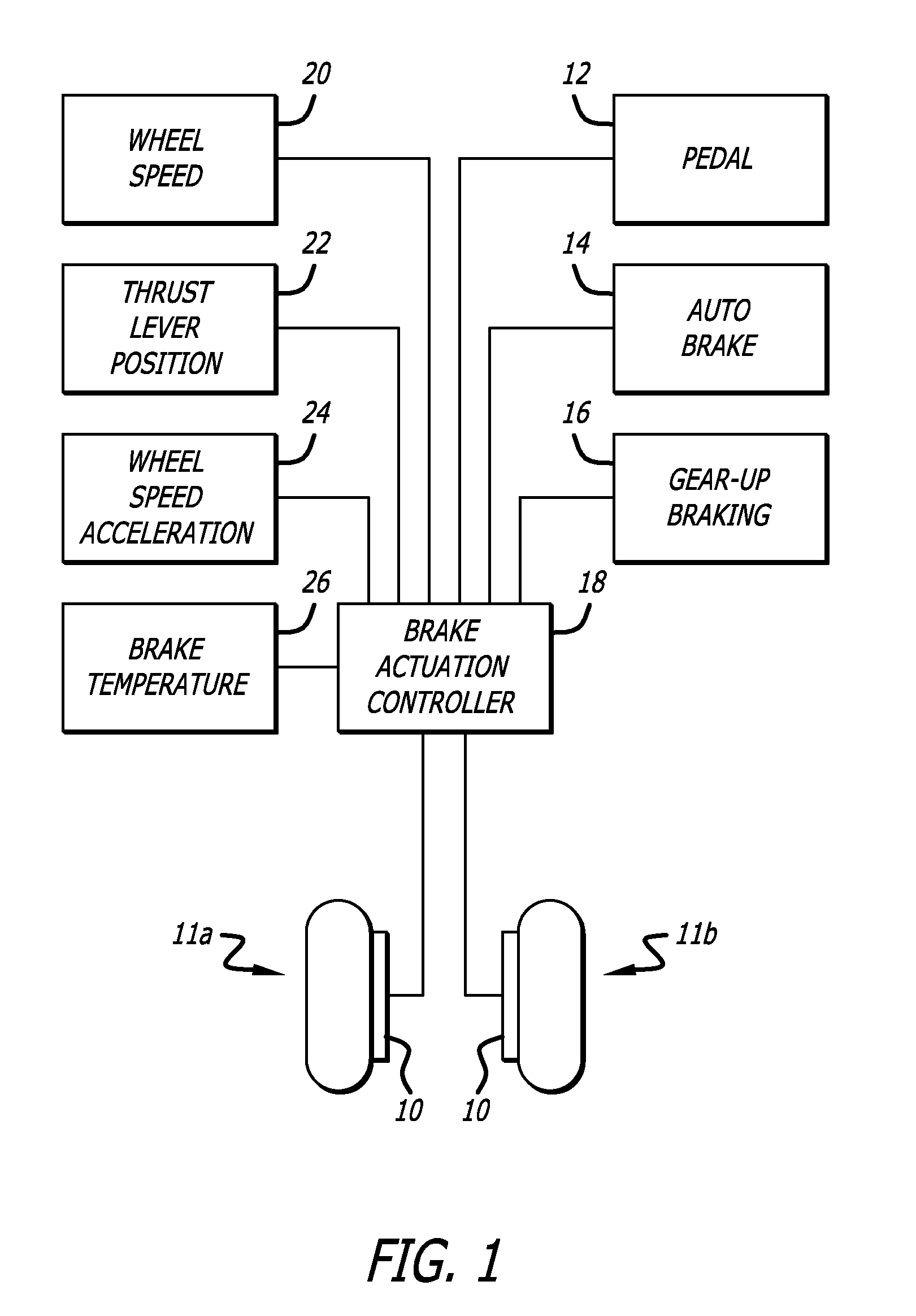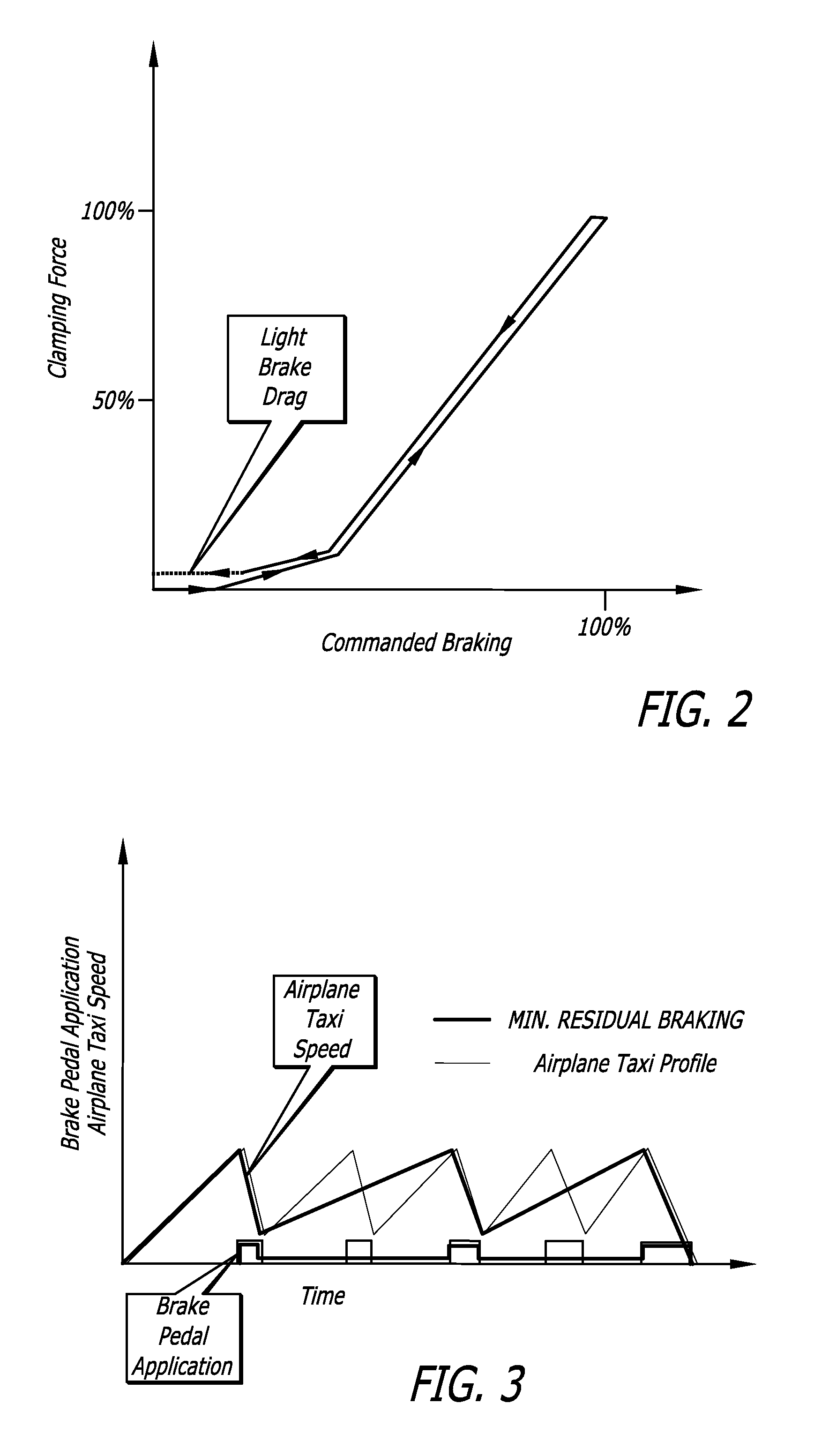System and method for aircraft brake metering to alleviate structural loading
a technology of aircraft brakes and clamping force, which is applied in the direction of aircraft braking arrangements, braking systems, transportation and packaging, etc., can solve the problems of affecting the directional stability of aircraft, damage to wheels and brakes, and is not possible with the current available electrical braking system, so as to increase the clamping force of electric aircraft carbon brakes and improve the accuracy of brake commands. , the effect of increasing the clamping for
- Summary
- Abstract
- Description
- Claims
- Application Information
AI Technical Summary
Benefits of technology
Problems solved by technology
Method used
Image
Examples
Embodiment Construction
[0022]While it is possible to reduce brake wear of electrically operated aircraft carbon brakes, once braking has been commenced, by maintaining a minimum light residual clamping brake force when braking is no longer commanded during taxiing of commercial aircraft, particularly at low speeds, unequal distribution of brake energy due to inaccuracy of brake clamping force can interfere with the directional stability of aircraft, and can result in damage to wheels and brakes from exposure to excessively high temperatures.
[0023]Referring to the drawings, which are provided for purposes of illustration and by way of example, the present invention accordingly provides for a method and system for controlling electrically operated aircraft brakes of an aircraft having a plurality of wheels and a corresponding plurality of wheel brakes for the plurality of wheels to increase accuracy of clamping force of electric aircraft brakes providing greater accuracy for low brake clamping force command...
PUM
 Login to View More
Login to View More Abstract
Description
Claims
Application Information
 Login to View More
Login to View More - R&D
- Intellectual Property
- Life Sciences
- Materials
- Tech Scout
- Unparalleled Data Quality
- Higher Quality Content
- 60% Fewer Hallucinations
Browse by: Latest US Patents, China's latest patents, Technical Efficacy Thesaurus, Application Domain, Technology Topic, Popular Technical Reports.
© 2025 PatSnap. All rights reserved.Legal|Privacy policy|Modern Slavery Act Transparency Statement|Sitemap|About US| Contact US: help@patsnap.com



